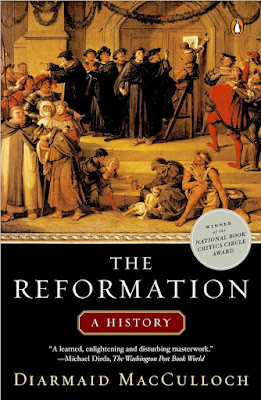
Introduction:
"The Reformation: A History" by Diarmaid MacCulloch is a monumental work that provides a detailed examination of one of the most significant events in Western history—the Protestant Reformation. MacCulloch, a renowned historian and Professor of the History of the Church at the University of Oxford, offers readers a comprehensive and engaging account of the Reformation, its causes, key figures, and far-reaching consequences. This article provides a detailed summary of MacCulloch's book, highlighting its main themes and insights.
Overview of the Reformation:
MacCulloch begins by setting the stage for the Reformation, explaining the socio-political and religious landscape of Europe in the 16th century. He explores the deep-rooted corruption within the Catholic Church, the emergence of humanist ideas, and the growing discontent among the populace. The author delves into the theological debates surrounding indulgences, salvation, and the authority of the Church, which ultimately led to Martin Luther's famous act of nailing his Ninety-Five Theses to the door of the Castle Church in Wittenberg in 1517.
Key Figures and Movements:
"The Reformation: A History" offers an in-depth analysis of the major players who shaped the Reformation. Martin Luther, the central figure, is portrayed as a complex and revolutionary thinker who challenged the Church's teachings and authority. MacCulloch also explores the contributions of other significant figures, such as John Calvin, Ulrich Zwingli, and Thomas Cranmer, each of whom played a crucial role in establishing Protestantism as a distinct religious movement.
Conflicts and Divisions:
The book extensively covers the conflicts and divisions that arose during the Reformation. MacCulloch explores the Peasants' War, which erupted as a consequence of social and economic grievances exacerbated by religious tensions. He also discusses the bitter religious wars, such as the French Wars of Religion and the Thirty Years' War, which ravaged Europe and solidified the divisions between Catholics and Protestants.
Reformation Beyond Europe:
MacCulloch expands the narrative beyond Europe, highlighting the influence of the Reformation on other continents. He explores the spread of Protestantism to England, Scotland, Scandinavia, and even the New World. Additionally, the book delves into the Counter-Reformation—a Catholic reform movement that emerged in response to the Reformation's challenges—and its impact on the Church's structure and practices.
Legacy and Impact:
In the final chapters, MacCulloch examines the lasting consequences of the Reformation. He explores how the Reformation fundamentally reshaped religious, social, and political structures in Europe and beyond. The book explores the development of various Protestant denominations, the rise of nation-states, the expansion of literacy, and the enduring impact on religious pluralism and individualism.
Conclusion:
"The Reformation: A History" by Diarmaid MacCulloch presents an extensive and well-researched account of the Reformation, offering readers a comprehensive understanding of this pivotal period in history. Through meticulous analysis, the book sheds light on the motivations, conflicts, and far-reaching consequences of the Reformation, ensuring that readers gain a profound appreciation for its enduring legacy. MacCulloch's engaging writing style and rigorous scholarship make this book an invaluable resource for anyone interested in understanding the complexities of the Reformation and its profound impact on Western civilization.
